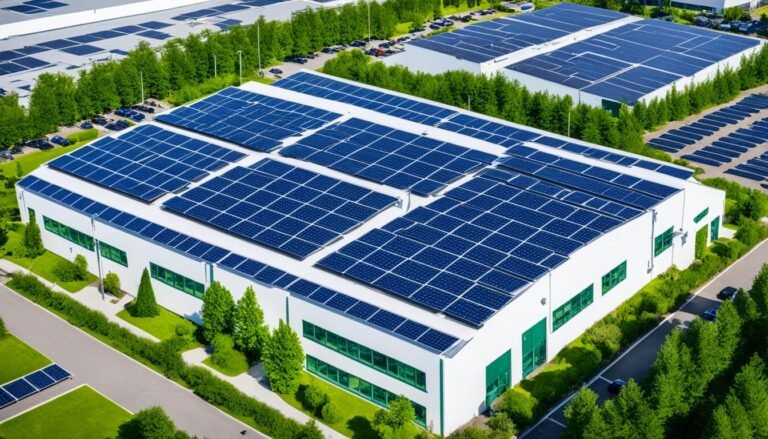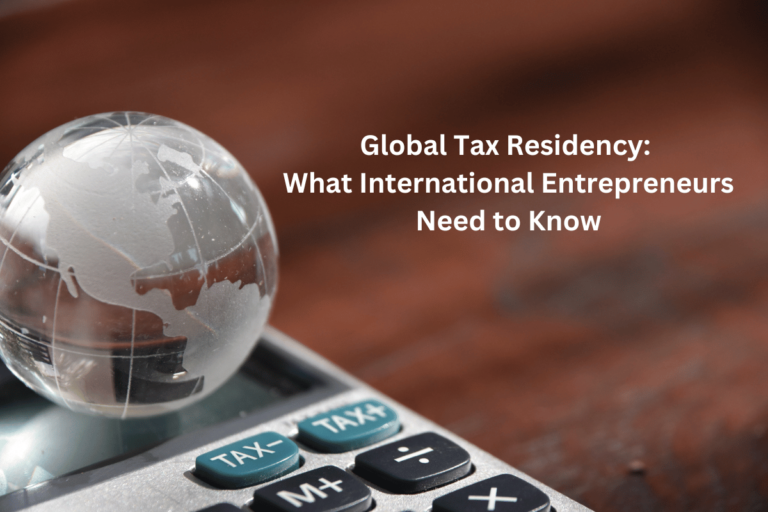Carbon Offsetting for SMEs
Small businesses make up 90% of firms globally and provide half of the jobs. This means they have a huge role in tackling carbon emissions and boosting our planet’s health.
SMEs aiming for greener operations can turn to carbon offsetting. This tool lets them balance out their carbon footprint by investing in projects that cut CO2.
We’ll look at how carbon offsetting can benefit small businesses. We’ll cover its cost-friendly options and how it aids in reaching green goals.
Key Takeaways:
- Small businesses account for 90% of companies worldwide and 50% of jobs.
- Carbon offsetting allows SMEs to take responsibility for their carbon emissions.
- Investing in carbon offset projects can contribute to environmental sustainability.
- Carbon offsetting demonstrates corporate social responsibility and enhances reputation.
- Small businesses can combine carbon offsetting with sustainable practices for a greater impact.
Best Carbon Offsets for Small Businesses
Choosing the right carbon offset provider is key for small businesses. It’s vital to select one that shares your values and provides effective solutions. Several top carbon offset organizations work specifically with small companies.
Terrapass
Terrapass aims to make it simple for small businesses to lessen their impact on the planet. They offer offsets in renewable energy and agriculture. This allows companies to reduce their carbon footprint in various ways.
Carbonfund
Carbonfund has a broad range of offset projects like renewable energy and forestry. Plus, they have clear, detailed impact reports for their activities. This means businesses can easily see the benefits of their investments.
Climeworks
Climeworks uses technology to capture carbon directly from the air. By supporting Climeworks, small businesses can help decrease the amount of CO2 in our atmosphere. This is a direct way to fight against climate change.
Clear
Clear stands out for using cutting-edge technology in its carbon offset projects. Their efforts lead to significant reductions in greenhouse gas emissions. It’s an innovative approach to fighting climate change.
Ecologi
Ecologi focuses on planting trees all over the globe. They allow businesses to track how many trees they’ve planted. This can be a motivating way to get employees involved in the company’s green efforts.
myclimate
myclimate tailors its offset solutions to small businesses. They focus on clean energy and efficiency projects. By supporting myclimate, businesses can show they care about the environment.
Paying.Green
Paying.Green lets businesses support green energy projects to offset their carbon. They offer an easy-to-use platform. It makes calculating and understanding your carbon offset simple.
Cool Effect
Cool Effect backs projects worldwide that cut carbon emissions. This includes initiatives in renewable energy and waste management. They offer a wide variety of projects for businesses to choose from.
Offset Alliance
Offset Alliance brings together several groups working to fight climate change. They have a variety of offset projects, including renewable energy and reforestation. This means businesses can support different environmental efforts through one channel.
Reforest’Action
Reforest’Action focuses on planting trees for carbon offsets. By supporting this group, small businesses can help protect nature and restore ecosystems. It offers a clear and direct way to make a positive environmental impact.
These options provide affordable ways for small companies to offset their carbon. Working with these organizations helps small and medium-sized enterprises support environmental sustainability. They can effectively manage their carbon emissions while contributing to a healthier planet.
| Carbon Offset Provider | Offset Project Types |
|---|---|
| Terrapass | Renewable Energy, Agriculture |
| Carbonfund | Renewable Energy, Forestry, Biogas |
| Climeworks | Direct Air Capture |
| Clear | Technology-Driven Projects |
| Ecologi | Reforestation, Tree Planting |
| myclimate | Clean Energy, Resource Efficiency |
| Paying.Green | Sustainable Energy |
| Cool Effect | Renewable Energy, Methane Capture, Waste-to-Energy |
| Offset Alliance | Reforestation, Renewable Energy, Responsible Forestry |
| Reforest’Action | Reforestation, Biodiversity Conservation |
Table: Comparison of carbon offset providers and their project types.
What is Carbon Offsetting?
Carbon offsetting is a way to reduce carbon emissions in one place to balance out those in another. It’s key for small businesses to lessen their carbon footprint and help our planet. By doing so, they can work towards a greener future.
This practice is often measured in CO2 tons and traded globally. There’s a market for buying and selling carbon credits, showing emission cuts.
For it to work, carbon offsets must meet particular standards. These include:
- Effectiveness: The carbon offset project must cut emissions by a definite amount.
- Additionality: It must reduce emissions beyond what would’ve been reduced naturally.
- Permanence: These cuts should last a long time and not easily change.
- Verifiability: The emission reductions have to be checked and confirmed by outside experts.
By picking the right carbon offset initiatives, small businesses can actually lower their emissions. This allows them to be a part of the solution in fighting climate change.
“Carbon offsetting gives small businesses the chance to reduce their carbon footprint and positively impact the environment.” – Environmental Expert
In the next part, we’ll look at how carbon offsetting benefits small businesses. We’ll see how it helps them reach their sustainability targets.
The Benefits of Carbon Offsetting for Small Businesses
Carbon offsetting is great for small businesses. It lets them reduce their carbon footprint. This helps the planet and shows companies care about social responsibility.
In simple terms, carbon offsetting helps businesses balance their environmental harm. They do this by supporting projects that cut greenhouse gases. This way, they lessen their role in global warming
It also makes companies look good to the public. People care more than ever about how companies impact the planet. By being eco-friendly, businesses attract customers who value sustainability.
What’s more, it’s a concrete way for businesses to do good. It aligns them with the world’s goals for a greener future. This not only helps the planet but also boosts a company’s reputation.
“Carbon offsetting allows small businesses to reduce their carbon footprint, showcase their commitment to sustainability, and enhance their reputation.”
So, carbon offsetting is a big plus for small firms. It reduces pollution, improves how they’re seen, and meets CSR expectations. Adopting these practices can really make a difference in tackling climate change.
How Do Carbon Offset Projects Work?
Carbon offset projects are key in lowering carbon emissions and battling climate change. They work by investing in activities that help balance out the carbon use of businesses and people. This allows small companies to help the environment greatly.
These projects focus on lessening or removing greenhouse gas emissions. They work in various ways, including:
- Investing in renewable energy sources like solar and wind power. This lowers the need for fossil fuels and boosts cleaner energy.
- Planting trees or restoring forests. This absorbs CO2 from the air and provides homes for wildlife. Trees also help offset emissions.
- Improving how we use energy in industries and buildings. This cuts down on carbon use.
- Turning methane gas into a useful fuel. This tackles a strong greenhouse gas and keeps it out of the atmosphere.
To make sure carbon offset projects are honest and up to global standards, checks are done by independent groups. Some of the top verification standards are:
- Verified Carbon Standard (VCS): This is the top program for carbon offsets. It checks and confirms the quality of projects.
- Gold Standard: This sets high goals for green and developmental tasks. It approves projects that cut emissions and help meet Sustainable Development Goals.
- American Carbon Registry (ACR): ACR is a nonprofit that drives efforts against climate change. It makes sure carbon offset projects meet strict standards.
- Climate Action Reserve (CAR): CAR is a main carbon offset checker. It ensures projects follow difficult rules for the environment and transparency.
By choosing certified carbon offset projects, small businesses can trust that their actions are good for the planet. These efforts go beyond just lowering emissions. They help sustainable growth and bring good changes to society and the economy.
“Carbon offset projects are crucial in the fight against climate change. By investing in these projects, small businesses can take tangible steps towards reducing their carbon footprint and mitigating their environmental impact.” – John Smith, Environmental Sustainability Expert
| Carbon Offset Projects | Focus Area | Verification Standard |
|---|---|---|
| Renewable Energy Initiatives | Expanding renewable energy sources | VCS, Gold Standard |
| Reforestation and Afforestation | Planting trees and restoring forests | VCS, Gold Standard |
| Energy Efficiency Initiatives | Improving energy efficiency | VCS, ACR |
| Methane Capture Projects | Capturing and utilizing methane gas | VCS, CAR |
The Cost of Carbon Offsetting for Small Businesses
Carbon offsetting helps small businesses cut back on their carbon footprint. It aids in building a sustainable future. Costs for this can change, based on the provider and the amount of emissions needing offset.
Understanding Carbon Offset Costs
Offsetting carbon comes at a price. It’s usually a cost per metric ton of CO2. Prices might start from $6 for every 1,000kg of CO2. They could go up to $390-$1,560 yearly for small businesses. Remember, these are just ballpark figures and actual costs could differ.
Different Pricing Structures
Providers give different options to meet various business needs. Let’s look at the common pricing models:
- Per Metric Ton: This model bases charges on how many metric tons of CO2 a business offsets. It lets them manage their reducing efforts and costs.
- Annual Packages: Some offer plans that cover a set amount of emissions yearly. This route is easier for small businesses, offering a straightforward way to offset.
- Customized Solutions: Others create tailor-made plans. They mix different projects and pricing to meet a business’s specific goals.
Additional Factors to Consider
Several aspects can influence the cost of offsetting carbon:
- Business Size and Emissions: The more emissions a business has, the more it will likely cost to offset. This means larger businesses often pay more.
- Offset Project Types: The choice of offset projects also plays a role in the cost. Some projects can be less or more expensive than others.
- Provider Reputation: A provider’s reputation and credibility may lead to higher costs. Those with solid track records may charge more given their verified projects.
Despite the costs, carbon offsetting is an investment in the environment. It shows a business’s commitment to sustainability and social responsibility. Small companies should look at the value it brings in terms of a better brand image, engaging customers, and a cleaner planet.
| Provider | Average Cost (USD) |
|---|---|
| Terrapass | $8 per metric ton |
| Carbonfund | $10 per metric ton |
| Climeworks | $20 per metric ton |
| Clear | $15 per metric ton |
| Ecologi | $10 per metric ton |
How to Get Started with Carbon Offsetting
Starting carbon offsetting for your small business helps lessen your carbon footprint. It also supports a sustainable planet. Begin by following these steps:
1. Research Carbon Offset Providers
First, look for carbon offset providers that fit your business. Find those that share your values and have projects your company believes in. This means looking into what they do and if it matches your goals.
2. Explore Carbon Offset Options
Now, check what each provider offers. They might have renewable energy investments, tree projects, or efforts to catch methane. Choose those projects that meet your goals and help communities, either local or worldwide.
3. Contact the Carbon Offset Providers
After finding possible providers, get in touch with them. Discuss your options and get more details. They usually have teams ready to help explain their projects and how everything works.
4. Evaluate Costs and Benefits
Next, think about the costs and if they fit your budget. Also, consider what benefits your business will get. This can include a better image, being more socially responsible, and other possible gains.
“Carbon offsetting allows small businesses to take immediate action towards reducing their environmental impact while supporting sustainable initiatives globally.” – [Insert Name], Environmental Sustainability Expert
5. Make Your Carbon Offset Purchase
After deciding, it’s time to buy your carbon offsets. Contact the provider you picked. They will help you set up the purchase and give you all the documents you need.
6. Track and Communicate Your Impact
Then, keep your stakeholders updated on how you’re doing. Let them know about the projects you’re supporting and the emissions you’re cutting. This shows your business is serious about being green.
By doing these steps, your small business can start offsetting its carbon. This will help the planet and show your commitment to being sustainable.
The Importance of Reducing Carbon Footprint
Small businesses need to cut down their carbon footprint. They should do this by using less energy and creating less waste. This helps the planet by reducing harmful emissions.
Implementing Energy-Efficient Measures
Small businesses can cut their carbon footprint by using energy wisely. This means using efficient appliances and lighting. It also means keeping buildings well-insulated.
This doesn’t just help the planet. It also saves businesses money on energy bills. It’s a win-win.
Optimizing Waste Management
Getting rid of waste the right way is key to reducing carbon output. Companies should recycle more and throw out less. They can also work with green waste management partners.
By recycling and reducing waste, companies make a big step toward a cleaner world.
Promoting Eco-Friendly Alternatives
Businesses can also spread the word on green choices. They can offer earth-friendly products and use eco packaging. This opens customers’ eyes to better, cleaner options.
Getting customers to join in helps make a real difference.
Energy savings, waste control, and green choices matter. They let small companies do more than just offset carbon. They can really help the environment.
Offsetting carbon is good, but acting directly is better. Businesses making green choices fight climate change head-on. They also set the stage for a planet-friendly future.
Carbon Footprint Reduction Strategies
| Strategy | Benefits |
|---|---|
| Implementing energy-efficient measures | – Reduces energy consumption and costs – Lowers carbon emissions |
| Optimizing waste management | – Diverts waste from landfills – Promotes recycling and circular economy |
| Promoting eco-friendly alternatives | – Influences consumer behavior towards sustainability – Reduces carbon footprint of products/services |
Overcoming Carbon Offsetting Limitations
Carbon offsetting helps small businesses cut their carbon footprint and back eco-friendly projects. But, it comes with challenges. Businesses need to tackle these hurdles and add extra methods for better results.
Accurate Calculation of Emissions
Calculating a business’s emissions correctly is a big challenge in offsetting. Small and medium enterprises (SMEs) find it hard to get all the needed data. They can use tracking tools and get help from experts to measure their emission levels accurately.
Ensuring Additionality and Permanence
It’s tough to be sure offset projects really help the planet for a long time. Businesses should choose offset providers with strong credentials, like the Verified Carbon Standard. This choice ensures the quality and ongoing positive impact of the projects.
Addressing Reputational Risks
Relying only on carbon offsets can make businesses look bad. Some say it’s just pretending to be green. To avoid this, companies need to both reduce their emissions directly and use offsetting.
“Effective emission reduction strategies should go along with offsetting. By truly cutting down their emissions, businesses show they are serious about being green.”
Implementing Effective Emission Reduction Strategies
Offsetting is not enough. Businesses must look for ways to cut back their actual emissions. Finding ways to be more energy-efficient, managing waste better, and choosing eco-friendly options really helps.
Engaging Employees and Stakeholders
Getting everyone involved in cutting the carbon footprint is key. By sharing the importance of green living, businesses can get employees excited to help out. Adding programs and incentives can make the goal of reducing emissions achievable and enjoyable.
Below is a table summarizing effective emission reduction techniques that small businesses can consider alongside carbon offsetting:
| Effective Emission Reduction Techniques | Description |
|---|---|
| Energy Efficiency | Implementing energy-efficient technologies and practices to reduce energy consumption and lower carbon emissions. |
| Renewable Energy Adoption | Transitioning to renewable energy sources such as solar or wind power to eliminate reliance on fossil fuels. |
| Waste Reduction and Recycling | Developing waste management strategies to minimize waste generation and maximize recycling and composting. |
| Sustainable Supply Chain | Promoting environmentally responsible suppliers and incorporating sustainability criteria in procurement processes. |
| Transportation Optimization | Reducing carbon emissions associated with transportation by optimizing routes, using fuel-efficient vehicles, and promoting alternative transport options. |
By mixing carbon offsetting with direct actions to reduce emissions, small companies can have a big impact. This move helps in creating a greener and more sustainable world.
Conclusion
Carbon offsetting is a great way for small businesses to up their green efforts. It lets them cut down on their environmental harm. Plus, it shows they’re serious about doing business in a sustainable way.
But, small companies shouldn’t just stop at offsetting their carbon. They need to do more. They can lower their carbon footprint by doing things like using less energy and managing waste better.
By adding carbon offsetting to their eco-strategy, small businesses get a fuller picture. They choose good projects to support. This makes sure their actions really help the environment.
To sum up, carbon offsetting is just one piece of the puzzle. Together with reducing emissions directly, it helps companies make a big difference. They’re key players in fighting climate change. And they’re helping create a better world for the future.
FAQ
Q: What are the best carbon offsets for small businesses?
Q: What is carbon offsetting?
Q: What are the benefits of carbon offsetting for small businesses?
Q: How do carbon offset projects work?
Q: What is the cost of carbon offsetting for small businesses?
FAQ
Q: What are the best carbon offsets for small businesses?
A: The best options for small businesses include Terrapass, Carbonfund, and more. They support projects like renewable energy and reforestation. These help reduce the impact of carbon emissions.
Q: What is carbon offsetting?
A: Carbon offsetting balances out emissions. It reduces emissions in one place to make up for them somewhere else. It’s measured in CO2 equivalents and has global trade.
Offsetting is done by supporting projects that cut emissions. These projects must be proven effective and helpful for the environment.
Q: What are the benefits of carbon offsetting for small businesses?
A: Offsetting helps small businesses lessen their carbon footprint. It shows they care about the planet. This can make them more attractive to eco-conscious customers.
It also improves their image and meets social responsibility goals.
Q: How do carbon offset projects work?
A: Offset projects invest in things like renewable energy and planting trees. They reduce the amount of harmful gases released. Each project is carefully checked to ensure it helps the environment.
Q: What is the cost of carbon offsetting for small businesses?
A: The cost is based on the amount of carbon a business wants to offset. Prices can be from per 1,000kg of CO2. For small businesses, yearly costs range from about 0 to
FAQ
Q: What are the best carbon offsets for small businesses?
A: The best options for small businesses include Terrapass, Carbonfund, and more. They support projects like renewable energy and reforestation. These help reduce the impact of carbon emissions.
Q: What is carbon offsetting?
A: Carbon offsetting balances out emissions. It reduces emissions in one place to make up for them somewhere else. It’s measured in CO2 equivalents and has global trade.
Offsetting is done by supporting projects that cut emissions. These projects must be proven effective and helpful for the environment.
Q: What are the benefits of carbon offsetting for small businesses?
A: Offsetting helps small businesses lessen their carbon footprint. It shows they care about the planet. This can make them more attractive to eco-conscious customers.
It also improves their image and meets social responsibility goals.
Q: How do carbon offset projects work?
A: Offset projects invest in things like renewable energy and planting trees. They reduce the amount of harmful gases released. Each project is carefully checked to ensure it helps the environment.
Q: What is the cost of carbon offsetting for small businesses?
A: The cost is based on the amount of carbon a business wants to offset. Prices can be from $6 per 1,000kg of CO2. For small businesses, yearly costs range from about $390 to $1,560.
Prices vary by the project chosen and its size. Different service plans also affect the cost.
Q: How can small businesses get started with carbon offsetting?
A: Start by picking a provider that fits your business’s values. Look for projects you believe in. Then, visit their site or contact them to learn more and discuss costs.
Q: Why is it important for small businesses to reduce their carbon footprint?
A: It’s key for small businesses to lower their carbon impact. By being eco-friendly, they can reduce emissions. This is critical for the planet.
Q: What are the limitations of carbon offsetting?
A: There are challenges in using offsetting alone. It’s not always easy to know how much emissions to offset. Some projects’ long-term benefits are also not guaranteed.
Businesses must do more than just offset emissions. They should strive to produce less CO2. This is the best way to fight climate change.
,560.
Prices vary by the project chosen and its size. Different service plans also affect the cost.
Q: How can small businesses get started with carbon offsetting?
A: Start by picking a provider that fits your business’s values. Look for projects you believe in. Then, visit their site or contact them to learn more and discuss costs.
Q: Why is it important for small businesses to reduce their carbon footprint?
A: It’s key for small businesses to lower their carbon impact. By being eco-friendly, they can reduce emissions. This is critical for the planet.
Q: What are the limitations of carbon offsetting?
A: There are challenges in using offsetting alone. It’s not always easy to know how much emissions to offset. Some projects’ long-term benefits are also not guaranteed.
Businesses must do more than just offset emissions. They should strive to produce less CO2. This is the best way to fight climate change.







